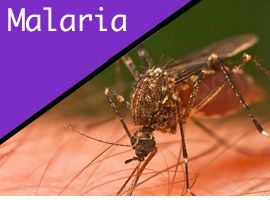I think we’ve maxed out our “photos that make you queasy” quota, so we will go with a g-rated picture of some mangoes for this post. If you want to see more graphic content, you can scroll down to the video we have embedded in the post.
What are mango worms?
First, the mango worm goes by many names. It is technically a fly larva and it also goes by the names mango fly, putzi fly and tumbu fly depending on where you are.
Where are mango worms found?
Mango worms are found throughout tropical areas of sub-Saharan Africa, but is more common in certain regions (Central Africa, for example). You could come across them in another part of the world, too, but only if a human or animal traveled while infected with the worms.
The worm works like this:
- Adult female worm lays a few hundred eggs into the soil OR onto some damp clothing that is hanging out to dry.
- The larvae penetrate the skin of the host and take up residence in the subcutaneous tissue, a layer of skin that has fat and connective tissue filled with blood vessels and nerves.
- Then they grow and fatten up.
- After 8-12 days, a boil will have formed.
- It will itch and then get increasingly painful before it…
- actually opens up so the worm can come out to play.
- The worm then falls to the ground where it buries itself in order to go into its final stage of growth before turning into a fly.
Got it? Good.
How can mango worm be prevented?
Mango worm is generally very uncommon for travelers to come across, but there are certainly a few steps you can take to really minimize your risk. For one, do not walk around barefoot on soil. By the same token, don’t roll around in the soil. Never a good idea.
As far as your clothes go, if you are in an area where mango worm is prevalent, it would be best to machine dry your clothes or iron them after leaving them out to line dry. The heat will effectively kill the larvae.
Mango worm treatment
There is no medication you can take that will kill the mango worm. You simply have to wait for it to come out. Alternatively, you can cover the boil with vaseline or a similar product and wait till the worm pops out on its own (the vaseline will cut off its access to oxygen). In rare cases, a visit to a clinic may be required to extract the worm.
Mango worms do not pose a serious health risk. They do not carry other diseases with them and they do not cause complications themselves outside of the boil that they create. It is important, however, to remember to thoroughly disinfect the area after the worm has emerged from the body.
For a (graphic) visual demonstration of mango worm extraction, have a look at the video below.
Mango worms should not be your primary travel health concern when traveling. In most cases, travelers will not come across them. That said, you should always visit a travel health clinic before traveling to your destination to become familiar with the possible health risks that exist there. If mango worm is present, the doctor will be able to offer additional advice on the level of risk, prevention, and treatment.
Have you ever had mango worm before? Please share your experience in the comments below.












{ 89 comments… add one }